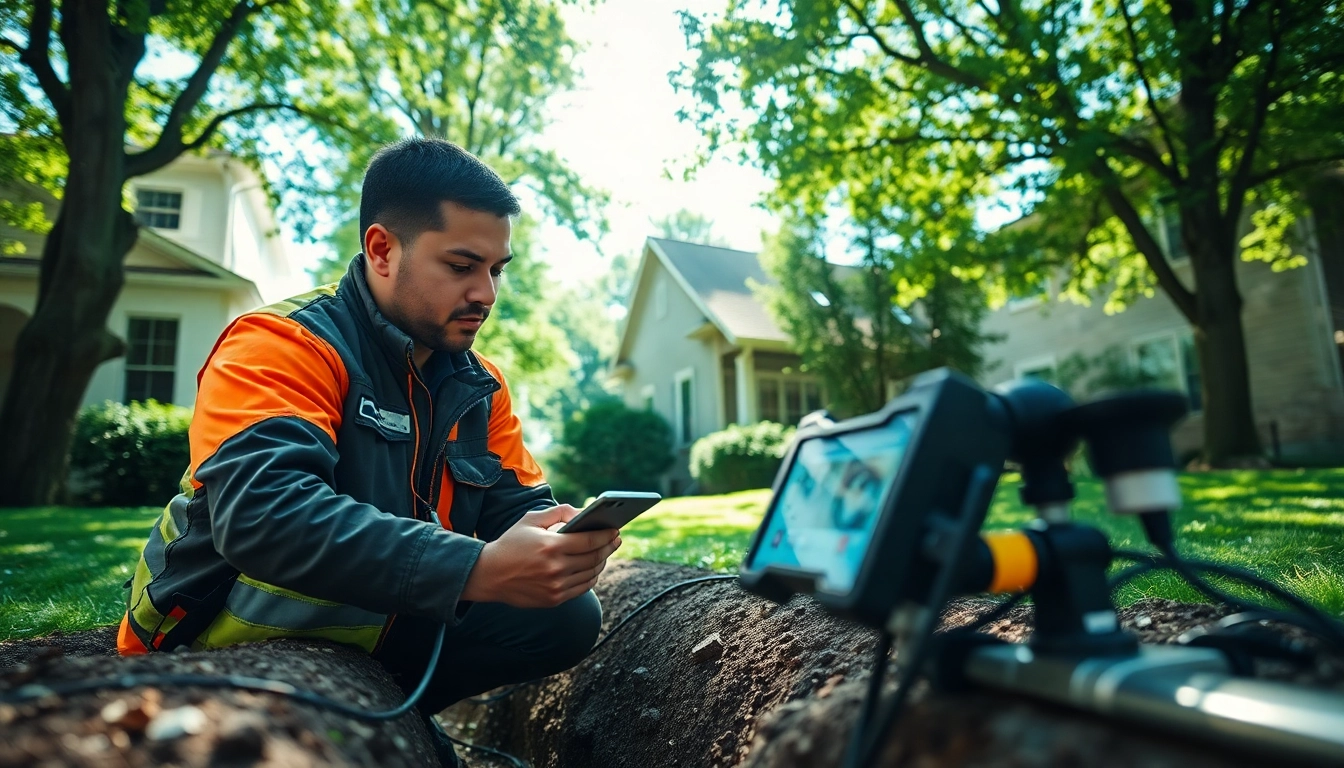Understanding Underground Leak Detection
Definition and Importance of Underground Leak Detection
Underground leak detection refers to the methods and technologies used to identify and locate leaks in underground piping systems. Proper detection is crucial for preventing significant damage to public infrastructure, residential areas, and the environment. Leaks can lead to extensive water loss, property damage, and increased utility costs, making timely detection essential. Technology advancements have revolutionized the underground leak detection landscape, allowing for quicker assessments and preventive measures. Utilizing professional services in Underground Leak Detection not only safeguards investments but also promotes sustainable water usage.
Common Causes of Underground Leaks
Several factors can contribute to underground leaks, including:
- Corrosion: Pipes, especially those made of metal, may corrode over time due to chemical reactions with soil and water, leading to leaks.
- Soil Movement: Shifts in soil due to natural processes or landscaping can cause pipes to crack or dislocate.
- Temperature Changes: Extreme hot or cold temperatures can expand or contract pipe materials, creating potential weak spots.
- Pipe Age: Older pipes are more prone to leaks due to wear and tear.
Signs of Possible Underground Leak Detection Needs
Recognizing the signs of a potential underground leak is crucial for early intervention. Common indicators include:
- Unexplained water pooling in your yard or around your foundation.
- A sudden increase in water bills without a clear reason.
- The presence of damp or moldy areas in your home.
- Changes in soil condition, such as areas that feel unusually soft.
Methods of Underground Leak Detection
Traditional Techniques for Underground Leak Detection
Traditional methods may include visual inspections and acoustic techniques. These approaches involve trained technicians visually examining the landscape for signs of leaks and employing sound detection methods to identify leaking water’s telltale sounds. These techniques, while effective, often require extensive labor and can be time-consuming.
Advanced Technology in Underground Leak Detection
Modern leak detection uses advanced technologies that greatly enhance accuracy and efficiency. Some notable technologies include:
- Acoustic Sensors: These devices pick up sound waves produced by water escaping from pipes and can pinpoint leak locations.
- Thermal Imaging: This technique involves using infrared cameras to detect temperature variations on the ground surface that may indicate a leak.
- Ground Penetrating Radar (GPR): GPR utilizes radar pulses to detect anomalies in the subsurface, making it effective for locating leaks.
- Electromagnetic Devices: These tools can identify leaks by measuring the flow and pressure of water in the system.
Choosing the Right Method for Your Needs
Selecting the appropriate method of leak detection depends on factors such as the severity of the leak, location accessibility, and available budget. For households with minimal water loss, traditional methods might suffice, but significant leaks or commercial properties may benefit more from advanced, technology-driven techniques.
Tools Used in Underground Leak Detection
Equipment for Accurate Underground Leak Detection
Various tools are essential for accurate leak detection. Technicians often employ equipment specific to the leak detection method used. Key equipment includes:
- Portable Acoustic Leak Detectors
- Infrared Cameras for Thermal Imaging
- Ground Penetrating Radar Units
- Hydrophones for sound detection
- Pressure Testing Instruments
Maintenance of Leak Detection Devices
To ensure the longevity and reliability of leak detection devices, regular maintenance is paramount. This may include:
- Calibrating instruments according to manufacturer specifications.
- Regularly inspecting sensors and equipment for wear and damage.
- Updating software for technologically advanced devices.
Cost Considerations for Leak Detection Equipment
When investing in leak detection equipment or services, it’s crucial to evaluate the costs involved. Expenses can vary widely based on the technology selected, the scale of operations, and the specific needs of the property. Consideration of potential long-term savings from preventing water damage and reducing water loss can justify upfront costs.
Professional vs. DIY Underground Leak Detection
When to Call Professionals for Underground Leak Detection
Professionals are often better equipped for complex leak detection tasks, especially in large properties or new installations. Indicators that you might need to consult a professional include extensive water pooling, fluctuating water pressure, or when the leak location is suspected to be difficult to access.
DIY Techniques for Basic Underground Leak Detection
For those looking to tackle minor leak detection, several DIY techniques can be employed, such as:
- Monitoring water meter readings for sudden fluctuations.
- Testing for wet soil or vegetation near suspected areas.
- Listening for sounds of running water in silence at various intervals.
Evaluating DIY Success for Underground Leak Detection
To determine the effectiveness of DIY efforts, carefully observe results and consider these factors:
- Did you locate the water leak?
- Were any necessary repairs made effectively?
- Is there a decrease in your water bill following your intervention?
Preventing Future Leaks Through Effective Underground Leak Detection
Best Practices to Reduce Leak Risks
Establishing best practices can significantly reduce the risks of future leaks:
- Regularly inspect plumbing for signs of wear.
- Maintain proper landscape drainage to mitigate soil movement.
- Consider using corrosion-resistant materials for new installations.
Regular Inspections and Maintenance for Leak Prevention
Consistent inspections and proactive maintenance procedures can greatly enhance the lifespan of underground piping. Implementing scheduled checks for leaks, pressure tests, and employing professional services can detect potential problems before they escalate.
Benefits of Implementing Proactive Underground Leak Detection Strategies
Proactive leak detection strategies not only help in identifying issues early but also contribute to the sustainability of water resources, reducing costs related to water loss and damage repairs. Investing in these strategies can result in improved efficiency, reduced environmental impact, and substantial cost savings over time.



